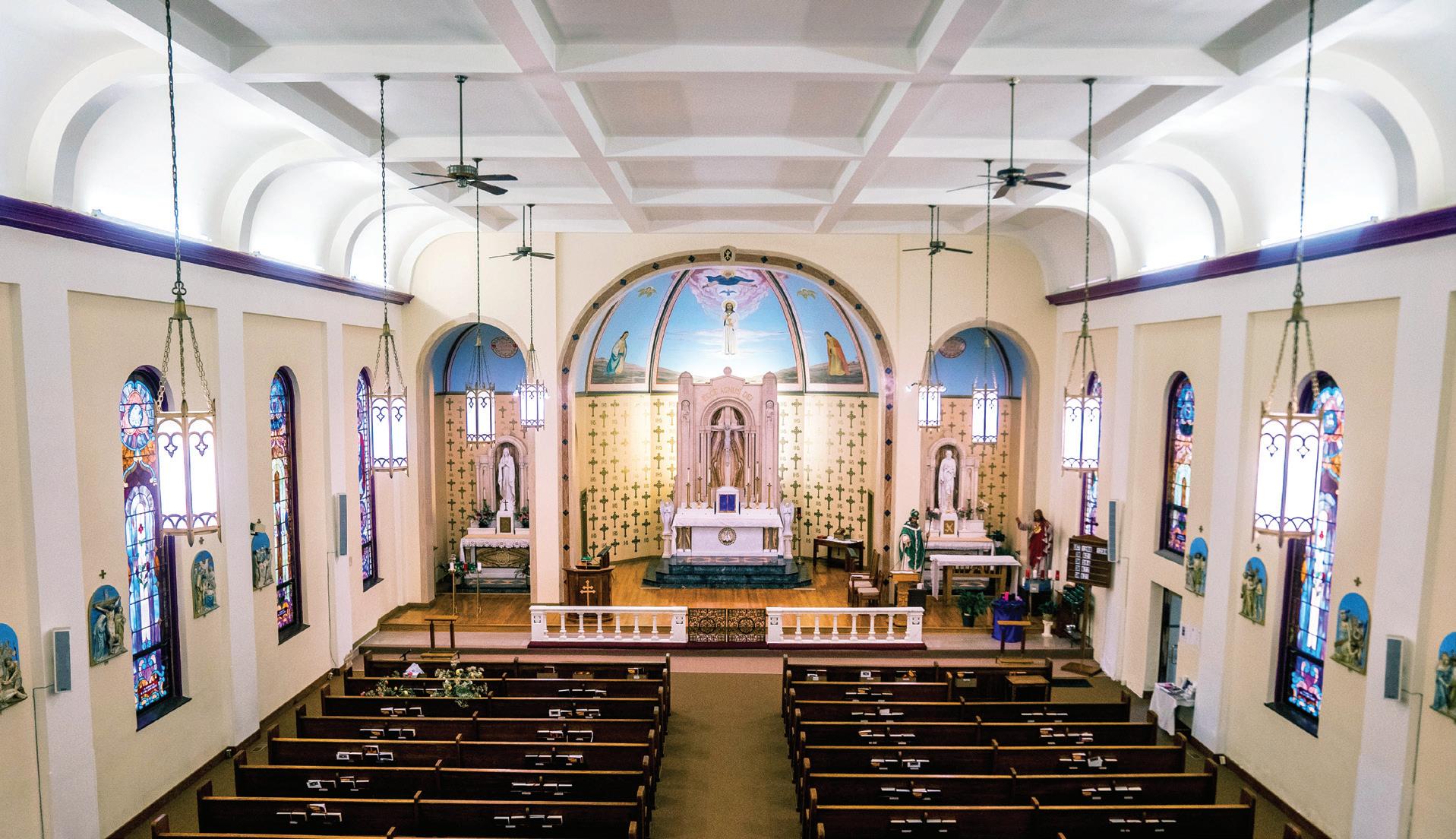
3 minute read
House of God
St. Patrick Parish, St. Joseph
By Ashlie Hand
Photos by Cory Thomason
St. Patrick Parish in St. Joseph celebrated its first Mass in 1869 at the Christian Brothers’ school at 11th and Montgomery streets. The current church was completed in December 1873 and looks much the same today from the outside, with the exception of the 1960s addition of a front entrance that allows for handicap accessibility. The church is built in the Romanesque style, a term coined by 19th century art historians that refers to the characteristics which bear some resemblance to ancient Roman architecture. All the labor was donated and materials for construction were purchased with proceeds from bazaars and socials.
According to This Far by Faith, vol. I, “Combining brick and stone became a practical and decorative adaptation of the Italianate Romanesque churches.” The total cost to build St. Patrick’s Church in 1869 was $20,000. The bell tower was built in 1874 for $50.
St. Patrick Parish’s church seats 200 and includes a traditional choir loft that is still used each week. The interior of the church originally ended where the current communion rail begins and was enlarged and redecorated in 1923. The stained-glass windows are believed to be original to the church, dating back to 1873.
The current altar, a signature architectural element of St. Patrick Parish’s church is made of a combination of white Carrara marble, Trani marble and Algerian onyx. Bas relief statues of Saint Patrick and Saint Bridget were carved into the main altar. It was made in Italy in the early 1940s, but could not be delivered until after World War II, arriving in 1947.
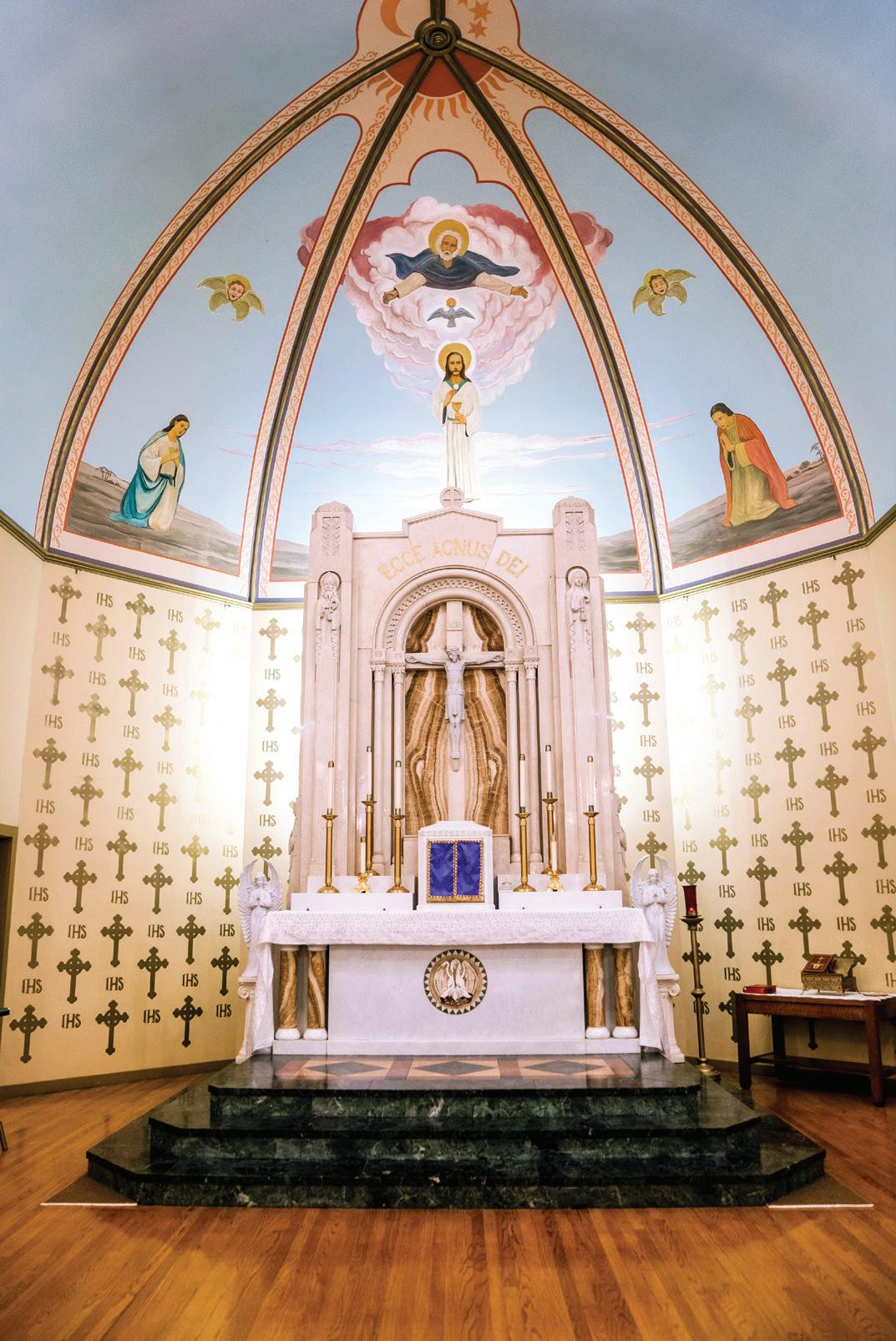
The Our Lady of Guadalupe Shrine represents a powerful devotion due to the migration of Hispanic Catholics from Holy Rosary Parish when it closed in the 1960s. The move established a lasting legacy of Mexican and Hispanic heritage at St. Patrick Parish that continues today. The St. Patrick Mexican Fiesta began in 1969 and remains one of the hallmarks of summer in St. Joseph.
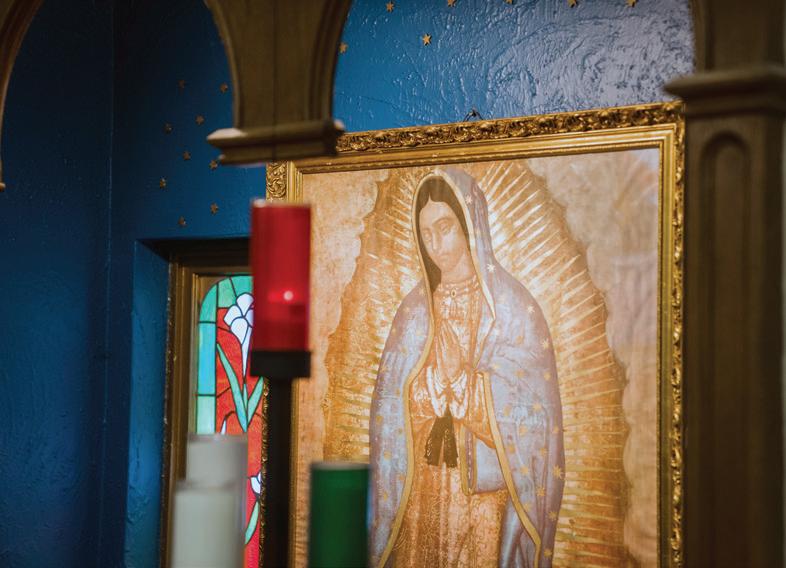
The side altars were also made in Italy, purchased from the Hackner Company of LaCrosse, Wisconsin, and arrived with the main altar in 1947. They are dedicated to the Blessed Mother and Saint Joseph. Familiar symbols are painted on the ceiling above each side altar, roses for the Blessed Mother and lilies for Saint Joseph.
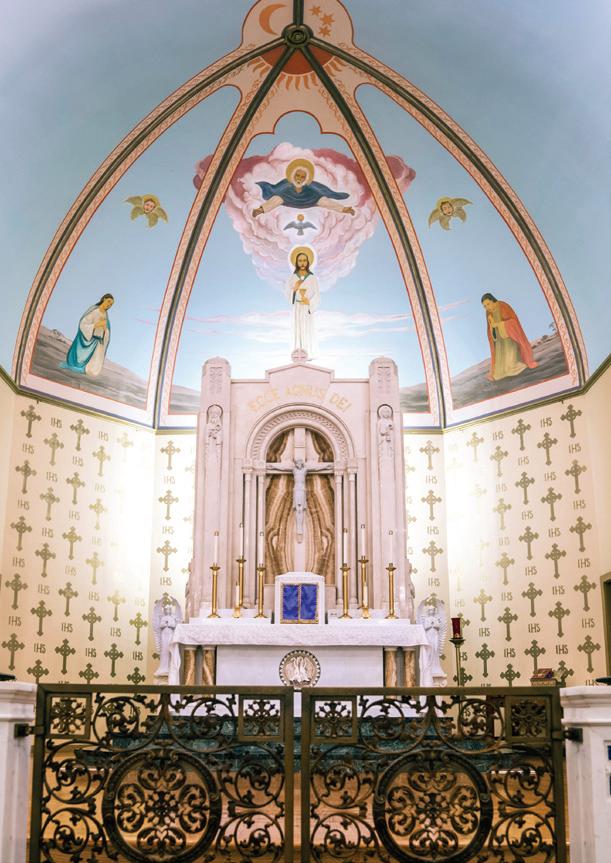
Father Jonathan Davis has served as pastor at St. Patrick’s Parish for nearly 18 months, following assignments at Holy Cross Parish and Our Lady of Peace Parish in Kansas City. He has a special appreciation for the diversity of cultures within the congregation of the parish, which he says is about 60 percent Hispanic and growing. “It’s a really beautiful representation of the universality of the Catholic Church. That’s what I love about it,” he said.
Hand-carved and realistically painted wood Stations of the Cross surround the main worship space inside the church.
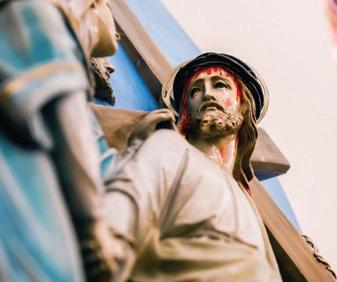
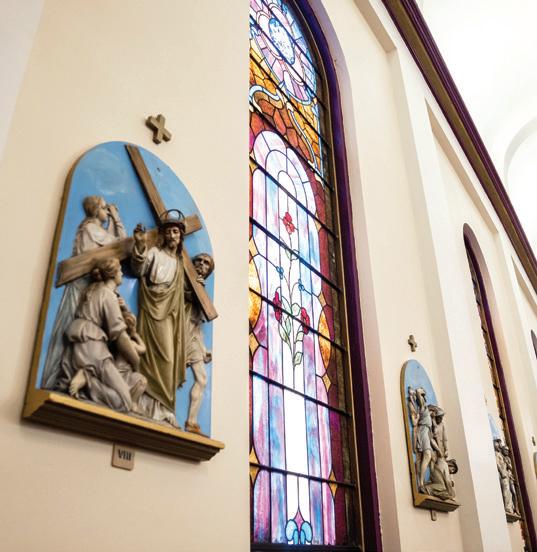
Following his ordination in 2017, Bishop Johnston placed Father Davis in a Spanish immersion program in Mexico for six weeks, which gave him the necessary language skills to minister to the growing Hispanic Catholic community in the diocese. Today, Father Davis celebrates Masses in both English and Spanish, and shares with the congregation a love of Hispanic cultures around the world.
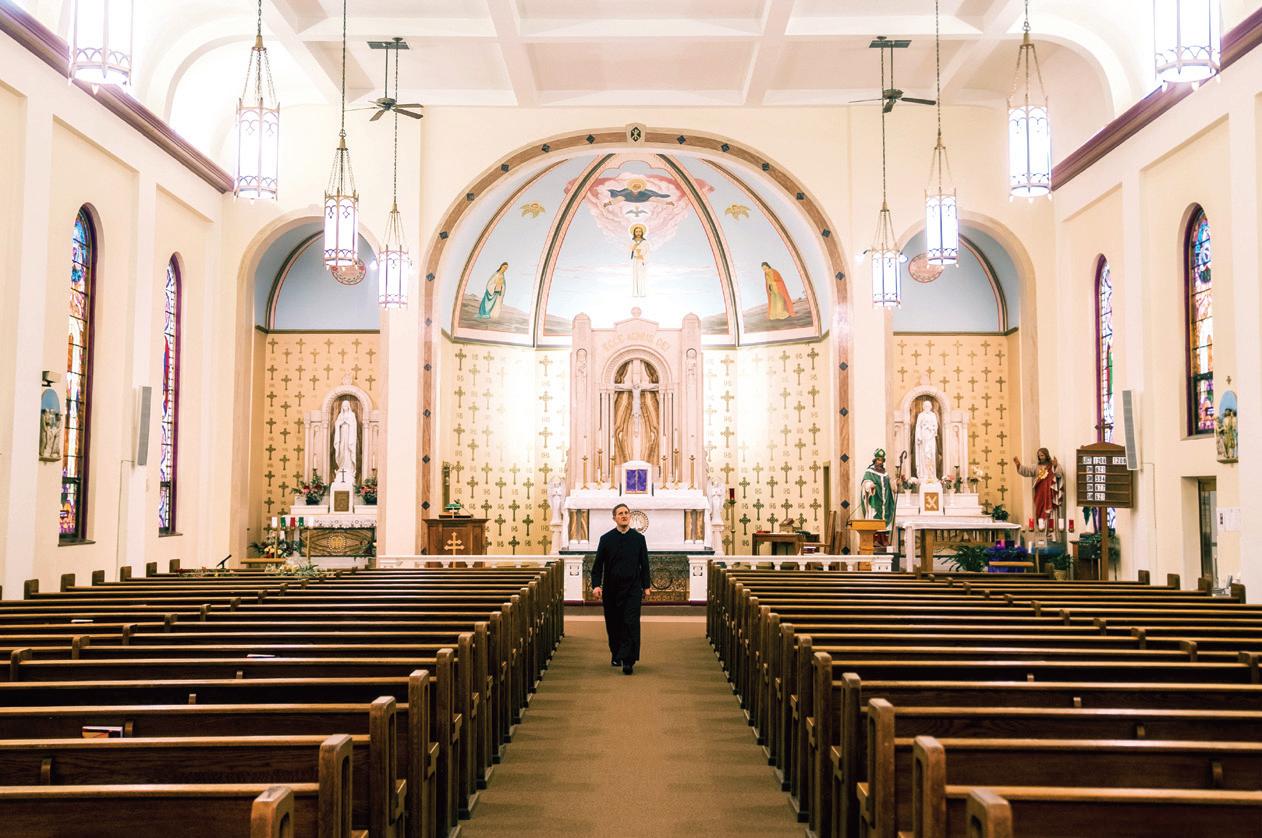
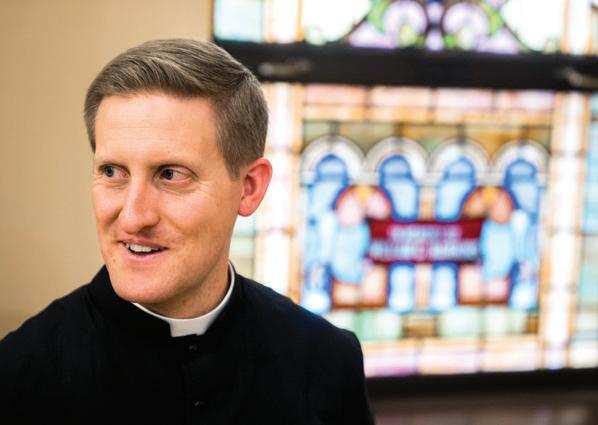
The church was intentionally built facing the east, the direction from which we believe Christ will return. So, as we look toward Easter, Father Davis offers a connection to the Resurrection and the ancient liturgical tradition of Christians facing toward the east in prayer, “Those entering the church at Easter would actually face the east to make their baptismal promises. In doing this, their backs were toward the west to symbolize they were turning towards Christ the Light of the World and turning their backs on the darkness of sin and the things of the world.”
The base of the altar features a pelican, an ancient image of Christ. The tradition is that when a mother pelican is without food, she will feed her own flesh to her young. The closer you get to the image, the greater the level of detail you can see.
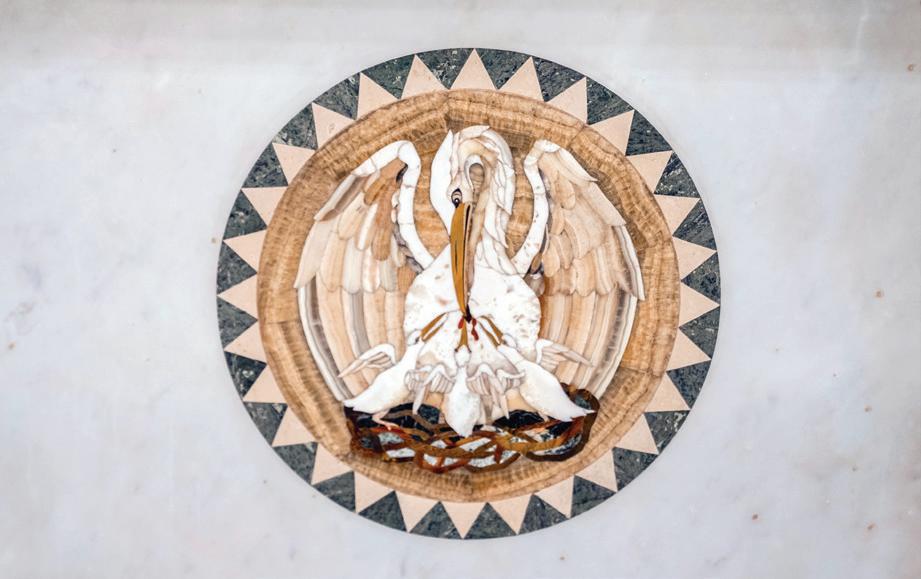
The statue of the parish’s patron saint, Saint Patrick, was a more recent gift to the parish, while the statue of the Sacred Heart of Jesus dates back to 1929, according to a handwritten account inside one of the arms.
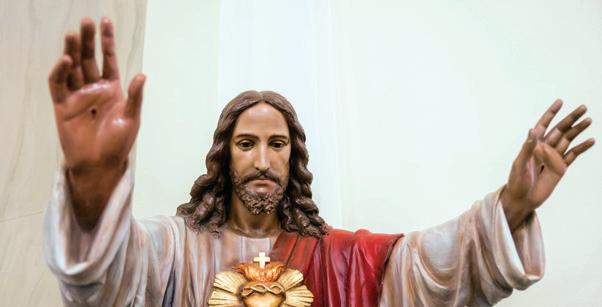
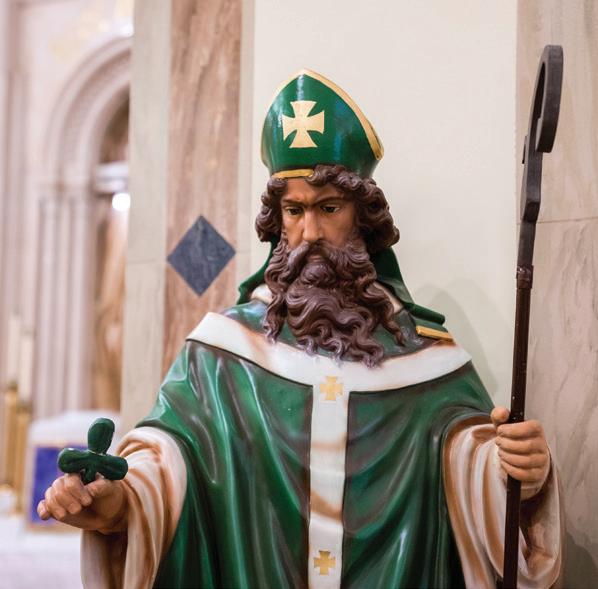
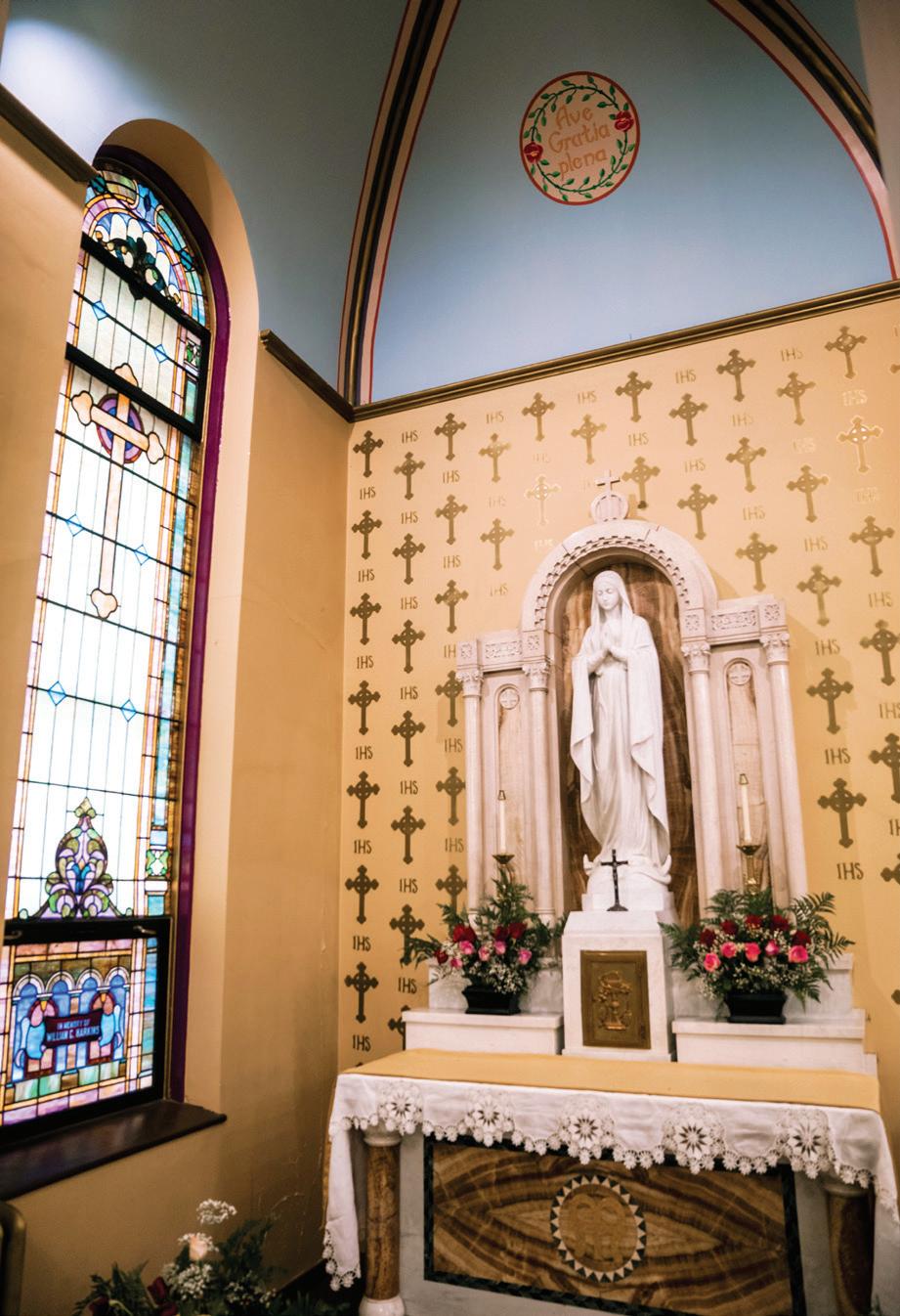
By Robert










